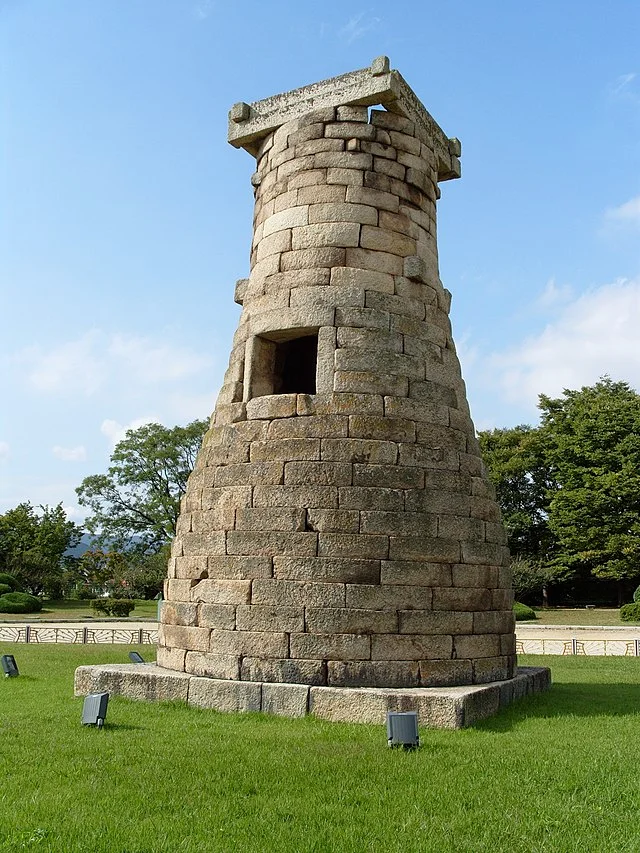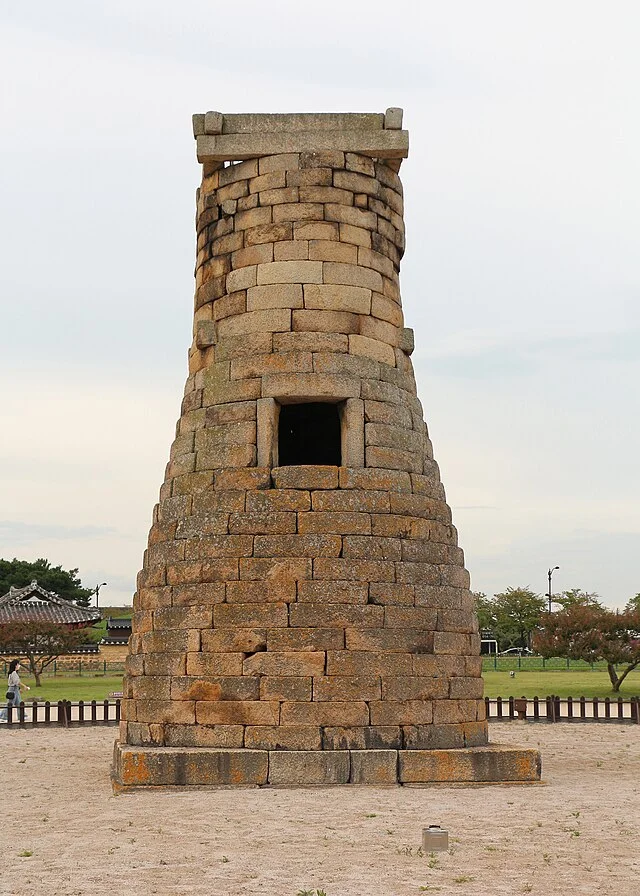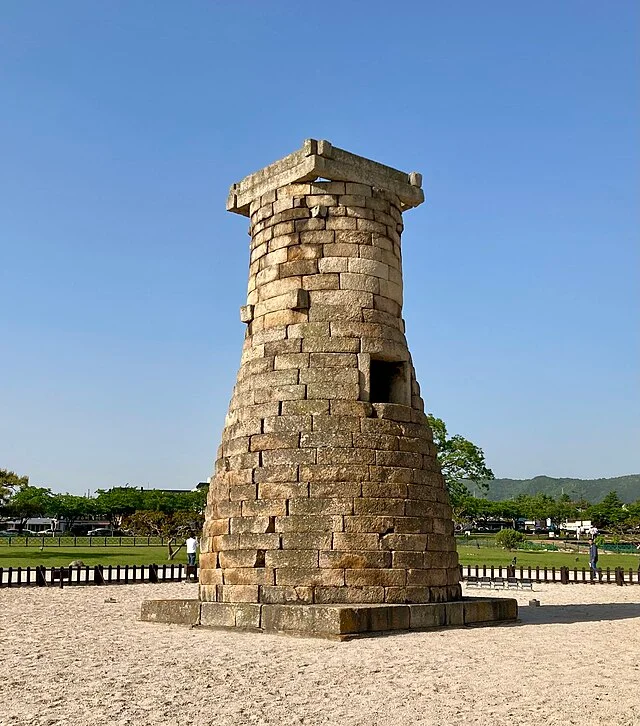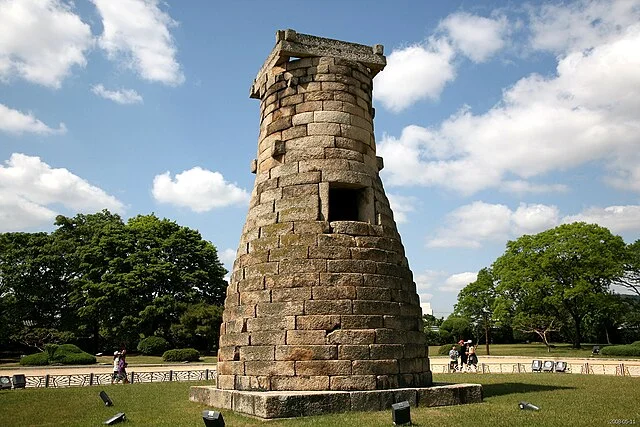Cheomseongdae is an ancient astronomical observatory located in Gyeongju, South Korea. Built during the Silla Kingdom, it remains one of the oldest surviving observatories in East Asia. Historians date its construction to the reign of Queen Seondeok, around AD 632–647.
Get your dose of History via Email
Architecture and Design

Cheomseongdae stands 9.17 meters tall and is made of 362 stones, representing the days of the lunar year. The structure has a cylindrical body with a square base and a round top. There is an opening midway, which was likely used to observe celestial objects. The base comprises 12 stones, thought to symbolize the months of the year. This design shows a strong connection between astronomy and the Silla kingdom’s calendar system.
The observatory’s 27 levels may also represent Queen Seondeok as the 27th ruler of Silla. The use of symmetry and proportions highlights the mathematical knowledge of the Silla people.
Function and Purpose

Cheomseongdae served as an astronomical observatory, helping scholars track the movements of stars and planets. This data would have been crucial for agricultural planning and ceremonial events. Some historians believe that the structure may have also had a symbolic role, reflecting the Silla Kingdom’s connection to the heavens and its rulers’ authority.
The opening at the midpoint allowed observers to view the stars from inside the structure. Although it is uncertain how exactly the observatory was used, its design aligns with other ancient structures that track celestial movements.
Cultural Significance

Cheomseongdae reflects the Silla Kingdom’s advanced understanding of science and technology. It also serves as a symbol of the kingdom’s power and cultural achievements. The observatory is part of the UNESCO World Heritage-listed Gyeongju Historic Areas, further emphasizing its importance to Korean heritage.
Today, Cheomseongdae is a popular tourist site, drawing visitors interested in ancient astronomy and Silla history. Its continued preservation is a testament to Korea’s respect for its cultural past.
Conclusion
Cheomseongdae is more than just an ancient structure. It represents the Silla Kingdom’s scientific prowess and connection to the cosmos. Despite the limited historical records about its specific use, the observatory’s architectural precision and symbolism offer valuable insights into Korea’s early astronomical practices.
Source:

